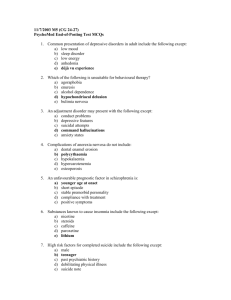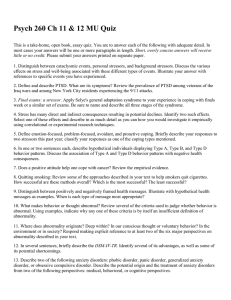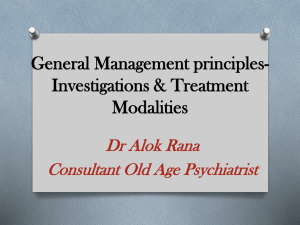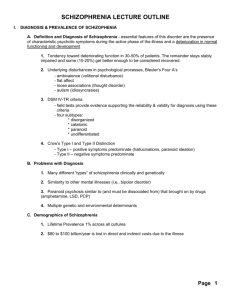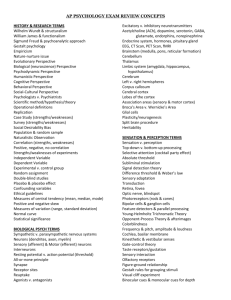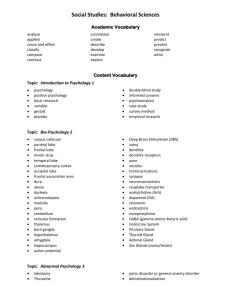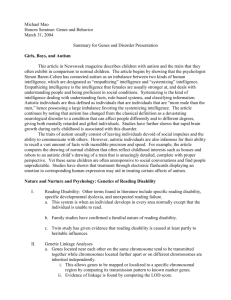Clinical psychology
advertisement
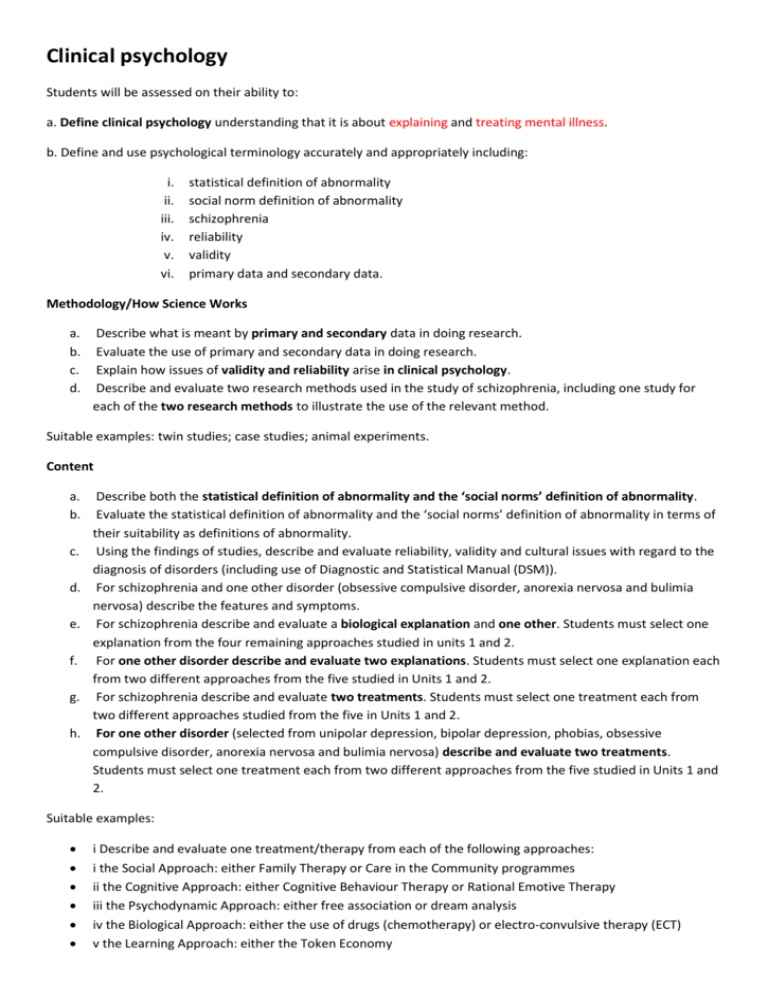
Clinical psychology Students will be assessed on their ability to: a. Define clinical psychology understanding that it is about explaining and treating mental illness. b. Define and use psychological terminology accurately and appropriately including: i. ii. iii. iv. v. vi. statistical definition of abnormality social norm definition of abnormality schizophrenia reliability validity primary data and secondary data. Methodology/How Science Works a. b. c. d. Describe what is meant by primary and secondary data in doing research. Evaluate the use of primary and secondary data in doing research. Explain how issues of validity and reliability arise in clinical psychology. Describe and evaluate two research methods used in the study of schizophrenia, including one study for each of the two research methods to illustrate the use of the relevant method. Suitable examples: twin studies; case studies; animal experiments. Content a. b. c. d. e. f. g. h. Describe both the statistical definition of abnormality and the ‘social norms’ definition of abnormality. Evaluate the statistical definition of abnormality and the ‘social norms’ definition of abnormality in terms of their suitability as definitions of abnormality. Using the findings of studies, describe and evaluate reliability, validity and cultural issues with regard to the diagnosis of disorders (including use of Diagnostic and Statistical Manual (DSM)). For schizophrenia and one other disorder (obsessive compulsive disorder, anorexia nervosa and bulimia nervosa) describe the features and symptoms. For schizophrenia describe and evaluate a biological explanation and one other. Students must select one explanation from the four remaining approaches studied in units 1 and 2. For one other disorder describe and evaluate two explanations. Students must select one explanation each from two different approaches from the five studied in Units 1 and 2. For schizophrenia describe and evaluate two treatments. Students must select one treatment each from two different approaches studied from the five in Units 1 and 2. For one other disorder (selected from unipolar depression, bipolar depression, phobias, obsessive compulsive disorder, anorexia nervosa and bulimia nervosa) describe and evaluate two treatments. Students must select one treatment each from two different approaches from the five studied in Units 1 and 2. Suitable examples: i Describe and evaluate one treatment/therapy from each of the following approaches: i the Social Approach: either Family Therapy or Care in the Community programmes ii the Cognitive Approach: either Cognitive Behaviour Therapy or Rational Emotive Therapy iii the Psychodynamic Approach: either free association or dream analysis iv the Biological Approach: either the use of drugs (chemotherapy) or electro-convulsive therapy (ECT) v the Learning Approach: either the Token Economy Describe and evaluate one treatment/therapy from each of the following approaches: i the Social Approach: either Family Therapy or Care in the Community programmes ii the Cognitive Approach: either Cognitive Behaviour Therapy or Rational Emotive Therapy iii the Psychodynamic Approach: either free association or dream analysis iv the Biological Approach: either the use of drugs (chemotherapy) or electro-convulsive therapy (ECT) v the Learning Approach: either the Token Economy Programme or Systematic Desensitisation. Studies in detail Describe and evaluate Rosenhan (1973) On being sane in insane places and two other studies. One other study must focus on schizophrenia and one other study must focus on one other chosen disorder. Suitable examples: eg for schizophrenia, Goldstein (1988) Gender differences in the course of schizophrenia Lewine et al (1990) Sexual dimorphism in brain morphology and schizophrenia We are going to do: Mumford and Whitehouse (1988) Increased prevalence of bulimia nervosa among Asian schoolgirls Evidence in practice: short practical on a key issue a. Describe one key issue in clinical psychology, using the areas of study covered within the application Suitable examples: understanding a mental health disorder supporting someone with a mental health disorder in the home supporting someone with a mental health disorder in work the way that mental illness is portrayed in the media. b. Prepare a leaflet using secondary data for a particular audience about the key issue. Include a commentary on the leaflet explaining why decisions were made, who the audience was etc
